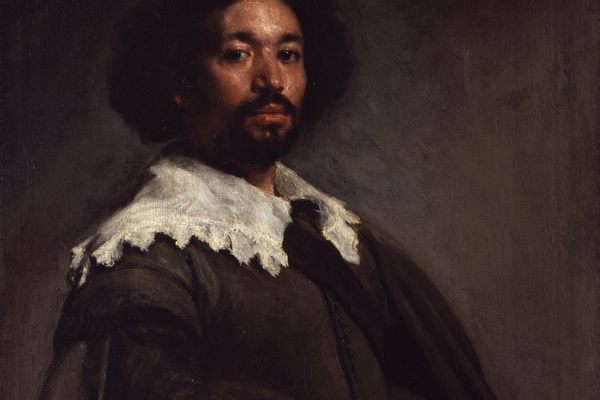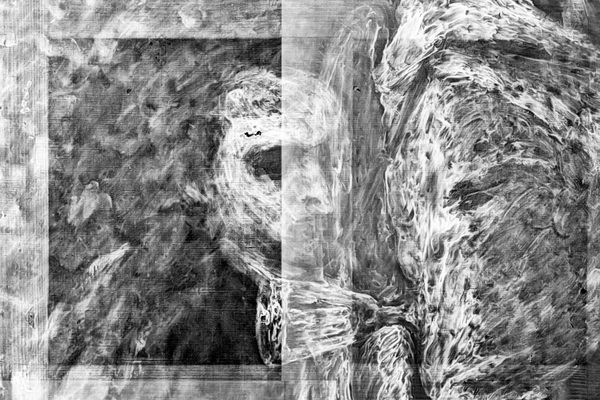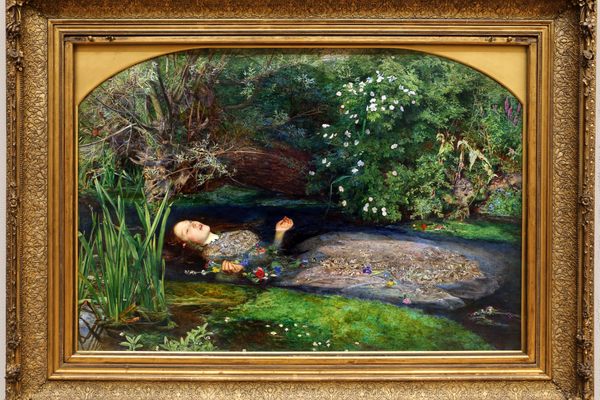Found: The Last Piece of a Jigsaw Masterpiece by René Magritte
The fourth and final part of a painting hidden under other paintings ends an 80-year mystery.

Belgian painter René Magritte, a leading light of surrealism, famously turned to his own dreams to produce oneiric works that deliberately defied common sense. He also seemingly defied common sense—depending on one’s point of view—to overcome serious financial challenges, which may explain the mysterious fate of one of his works, 1927’s The Enchanted Pose.
The enigma of The Enchanted Pose, which depicts side-by-side female nudes, began decades ago. It is listed in the comprehensive catalog of Magritte’s works, but its location had been marked as “unknown” since 1932. Magritte, who died in 1967, never said anything about its fate.
In 2013, art historians began to make headway on the mystery. A team of researchers at the Museum of Modern Art (MoMA) in New York was looking at X-ray images of another Magritte work, The Portrait (1935), when they noticed a hidden composition beneath the layers of paint. “When the image was rotated on its side and more closely examined, Cindy [Albertson, assistant conservator at MoMA] had a eureka moment—a half-length female figure in profile could clearly be discerned!” MoMa conservators Albertson and Michael Duffy wrote in a 2013. It was the upper left quadrant of The Enchanted Pose. Magritte had apparently quartered the painting and reused the canvas.

The discovery sparkled a global hunt for the other pieces. The lower left portion was discovered under the The Red Model (1935) at Stockholm’s Moderna Museet, while the lower right quarter was revealed beneath the paint of The Human Condition (1935), at Norwich Castle Museum in England.
The final piece of the puzzle had proven elusive—until now. The fourth and final piece, the upper right portion, has just been located by a team of researchers from the University of Liège in Belgium. It was hidden beneath God Is Not a Saint (c. 1935–36), in the permanent collection of the Magritte Museum in Brussels.

“I think he destroyed this painting because he was facing serious economic challenges,” David Strivay, director of the university, told Euronews. “It was the end of the 1920s and 1930s, he did not have any money so he recycled his old paintings, the ones he was not happy with, and then cut that one out in four parts.” Records show that the Brussels gallery that launched the artist’s career, Galerie Le Centaure, had closed in 1929, leaving the artist with very limited resources.

The find was made as part of a larger project, involving the Royal Museums of Fine Arts of Belgium (RMFAB) and the University of Liège, to examine the most extensive collection of Magritte’s works to better understand his technique—and perhaps uncover other lost or unknown works.
“If we have the opportunity to continue this research, it is reasonable to expect that more of Magritte’s missing paintings will surface,” Francisca Vandepitte, a curator at RMFAB said in a press release, suggesting that The Enchanted Pose isn’t the only work that Magritte cut up and recycled. Now that would be surreal.





































Follow us on Twitter to get the latest on the world's hidden wonders.
Like us on Facebook to get the latest on the world's hidden wonders.
Follow us on Twitter Like us on Facebook